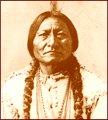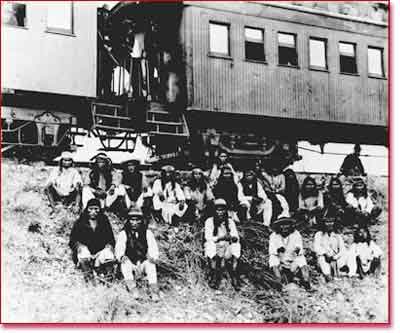
40. Closing the Frontier

It was hard to believe the two regions were part of the same country. The rapidly industrializing East bore no resemblance to most of the American West. Except for few urban centers on the coast, the West knew nothing of cities. Instead, the West was an emerging patchwork of homestead farmers, miners, and cattle ranchers. While Easterners tried to make their way in these and other professions, Native Americans desperately clung to the hopes of maintaining their tribal traditions.
Conflict between whites and Native Americans was as old as the earliest settlements, but there were clear patterns of waxing and waning intensity. The transcontinental railroad became the catalyst for much of the new conflict. Before its completion, the only Americans to venture westward had done so on horseback or Conestoga wagon. Now thousands more could migrate much more quickly, cheaply, and comfortably. As the numbers of white settlers from the East increased dramatically, conflicts with the native tribes did so as well.

With the massacres at Sand Creek in 1864 and Wounded Knee in 1890 as bookends, an examination of the intervening years reveals some of the most gruesome behavior known in United States history. Both sides committed unspeakable atrocities.
What would propel two peoples to such inhumane conduct? It all revolved around land. Native Americans fought desperately to live on their ancestral lands as white Americans strove to claim it for their own. Battles raged from the Dakotas to Idaho and from Montana to New Mexico.
Leaders such as Geronimo, Sitting Bull, Crazy Horse, and Chief Joseph became legendary to the Native American people for their resistance, but victory was not theirs for the taking.
Although battles were won and lost by both sides, many factors favored the United States Army. One deciding determinant was technology. Repeating rifles were a new means of mass destruction. The railroad system and industry of the East kept the federal troops better supplied than the Native Americans.
The blossoming population of the East was dwarfing the numbers of Indian folk. The buffalo, once seemingly as plentiful as the trees, were now disappearing. Perhaps the greatest killer of all was disease. For every Native American killed by a bullet, a thousand died from European plagues.
Time proved to be on the side of the army, and soon the tribes were forced to submit to a new form of existence on the reservation. For those that survived, life would never be the same.





